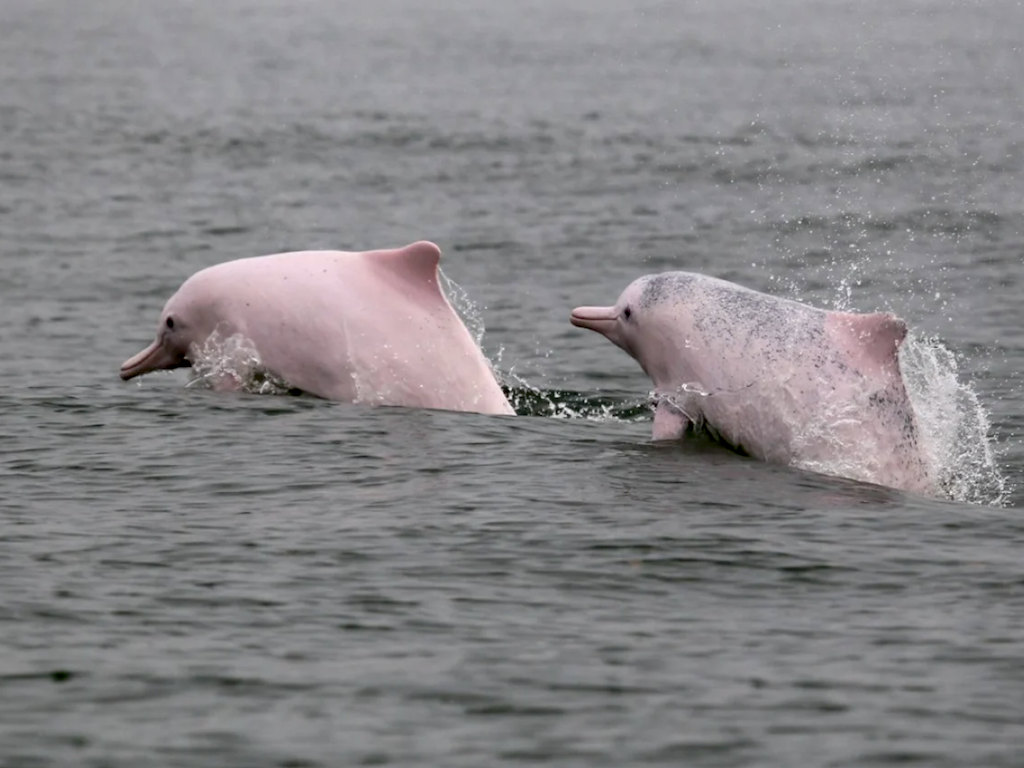3 Mins Read
Rare Indo-Pacific humpback dolphins, known as pink dolphins, have made a return to waters around Hong Kong due to the decline in high-speed ferry traffic amid the coronavirus pandemic. Scientists say that the threatened species usually avoid the busy Pearl River Delta region, but in recent months, dolphin numbers have spiked by as much as 30%.
According to marine scientist Lindsay Porter from the University of St. Andrews, the pink dolphins are moving back into areas of the Pearl River Delta that they have tended to avoid due to the high-speed ferries that go to and from Hong Kong and Macau. Since the coronavirus struck, the pause in ferry traffic has allowed the rare opportunity for these threatened dolphins to make a return, with numbers jumping by up to 30% since March this year.
“These waters, which were once one of the busiest thoroughfares in Hong Kong, have now become very quiet,” said Porter, as reported by Reuters. Porter has studied dolphins and threatened marine mammals in the Asia region for the past three decades.
These waters, which were once one of the busiest thoroughfares in Hong Kong, have now become very quiet.
Lindsay Porter, Marine Scientist at University of St. Andrews
This has given marine researchers a chance to study how underwater noise affects dolphins’ behaviour using microphones. They found that dolphins have managed to adapt faster than previously expected, and that the numbers of dolphins are likely to return because of the removal of such stressors induced by human activities.
Read: 90% of dolphin population in Indian Ocean wiped out by the fishing industry
Currently, marine scientists believe that there are about 2,000 dolphins inhabiting the entire Pearl River Delta.
“I sometimes feel that we’re studying the slow demise of this population, which can be really sad,” said Porter.
If we did have a comprehensive management plan in Hong Kong with more effective conservation measures, we might be able to quickly stop the decline in the dolphin population.
Lindsay Porter, Marine Scientist at University of St. Andrews
Conservationists and researchers all agree that more measures need to be put in place to protect the rare dolphins, who are often in danger of being hit by ferries or ships. So far, the Hong Kong government’s strategy has focused on opening marine parks, but traffic is not banned in these waters.
“If we did have a comprehensive management plan in Hong Kong with more effective conservation measures, we might be able to quickly stop the decline in the dolphin population,” she told Reuters.
Earlier this year, Green Queen reported on the decline of pink dolphins in the seas surrounding Hong Kong. Though they are also present in Thailand, Vietnam and Malaysia, the population of these dolphins in Hong Kong have come under severe stress in recent years due to development projects like the Hong Kong-Macau-Zhuhai bridge, which has filled the ocean with acoustic chaos and land reclamation plans that will drastically cut into their natural habitat.
These beloved animals are also made vulnerable to pollution from Hong Kong’s ineffective waste management and plastic pollution crisis.
Lead image courtesy of Handout.




